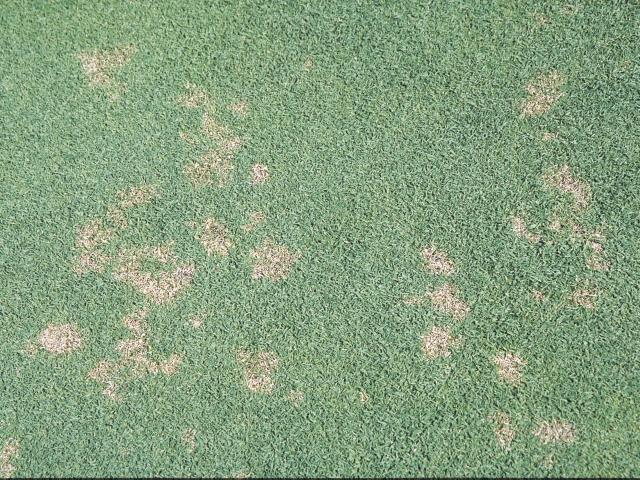Lawn disease problems
Most lawn diseases are encouraged by long periods of leaf wetness. These conditions occur after watering in the evening in summer or from periods of morning dew in winter. Greenkeepers have found that leaf wetness can be effectively broken down using a 'dummy rake', which is a 70-100cm long wooden board, which is dragged across the lawn. This method appears to have reduced the incidence of lawn diseases on golf courses. Morning dew can effectively be broken down with a reticulation system.
Dollar spot
Dollar spot is the most common lawn disease in home lawns, especially Queensland blue and couch. Symptoms begin with the appearance of small straw-coloured circular spots about the size of a 20 cent piece, which eventually grow. Dollar spot is encouraged by long periods of leaf wetness, and any method to break this wetness will prevent against this disease. Dollar spot is also encouraged in low nitrogen situations, so keep the lawn well fertilised. For more details refer to Lawn problems.
Spring dead spot
Spring dead spot occurs in cool moist conditions, mainly among couches and couch hybrids. The symptoms of spring dead spot are stunted, bleached patches of dying turf, up to one metre in diameter. These patches tend to reappear and expand in the same spot for three to four years. To prevent spring dead spot keep the lawn well watered and fertilised and do not cut it too low. Use varieties that are resistant to spring dead spot to over-seed an affected area. For chemical control, use a registered lawn fungicide.
Fairy ring
Fairy ring affects most grass varieties. Symptoms of this disease vary depending on the species of fungus. A dark green band of turf may develop in a circle or semi-circle, or a ring of brown, dying grass may occur. Mushrooms may or may not be present. White, fungal mycelia may be observed under the thatch layer. To prevent fairy ring, apply adequate nitrogen to mask the symptoms. Improve water penetration, and aerate. De-thatch the lawn if the thatch layer is more than 1.2cm thick. Fungicides are available but they have not been observed to reliably control fairy ring.

